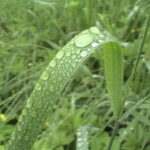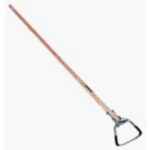Weeds are a very annoying part of life and can easily spread throughout your lawn or garden if not taken care of immediately. Weeds grow in all sorts of conditions from the harsh winter weather to the hot summer so it can be hard to figure out what a weed is. There are many types of weeds which can make identifying them a hard process, but there are some tricks to identifying weeds. If you have weeds in your lawn or garden and want to identify them so you can get rid of them, here are some easy tricks to help you out.
One way you can identify weeds is by their appearance. You can use a weed identification guide to help you identify weeds by their appearance. There are also identification guides by state which can help you narrow down which type of weed you have in your yard. Identification guides can be found at you local book store or flower store and will cost you about 20 dollars. Using the appearance of the weed to identify it can be easy if you know what to look for. For example, a dandelion can be identified by the fuzzy yellow blooms and their white heads which are filled with seeds. If you can look at a weed and note distinctive characteristics of it then you are probably going to be able to find it in the guide and identify it. Always note the color, shape and size of the weed along with the distinctive markings or special features of the weed to help you identify it using its appearance.
You can also identify weeds easily by noting what season they show their ugly head. Weeds can be either a perennial or an annual and the perennial weeds are the most aggressive weeds. Annual weeds will spread through their seeds but are not too troublesome but the perennial weeds will spread like wildfire and become very aggressive within a short period of time. Some annual weeds include bluegrass, chickweed and ragweed and are easy to identify due to their seasonal characteristics. Perennial weeds include weeds like Poison Ivy, greenbriar, clover and Bermuda grass and are often so aggressive they multiply within weeks of coming up.
You can also identify weeds that come up in your yard by examining the soil around the area. Examining the soil around the weed infected area is probably the easiest and most accurate way of identifying weeds. If you examine the soil in your garden and in your yard you can better determine which types of weeds will grow in that environment. If you have hard and heavy soil then you will most likely see dandelion, plantain and horse nettle. Sandy soils are great areas for thistle and sheep sorrel weeds to grow. You will also see knotweed, moss and spotted spurge in the wet soil that does not drain very well. If you know you have very fertile soil then you might see foxtail, pigweed or chickweed pop up in that area. Crabgrass, fennel, yarrow, dandelions and ragweed are all common weeds that grow in the poorer soils. You do not have to dig very deep to know what types of soils you have in your garden and yard. You can get a soil guide which will help you determine what types of soil you have by examining the appearance of it and how well it breaks apart. Soil guides are available at your local home improvement store or flower store for about 10 dollars. You can also feel with your hands and get a good estimate at what types of soil you have around you which will help you identify the weeds without spending any money on a test kit.
You can also check your local agriculture department or county departments for information about weeds growing in your area. County departments are a great resource to use if you have not found any other options to help you identify the weeds in your area. The resources at your local county office or agricultural department should pertain only to your area and make identifying weeds in your lawn or garden easier. Your local county office might also have a weed identification guide or handout that shows pictures of the weeds commonly found in your area so you might want to contact them to see.





